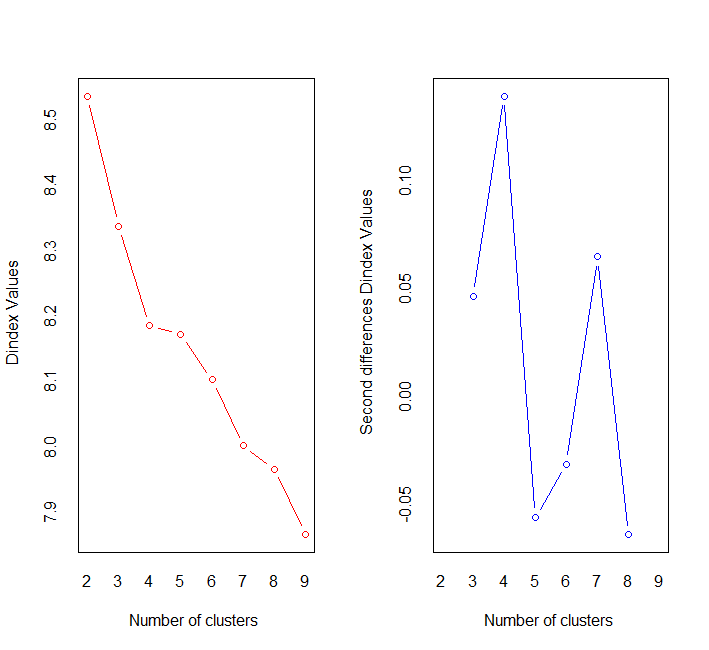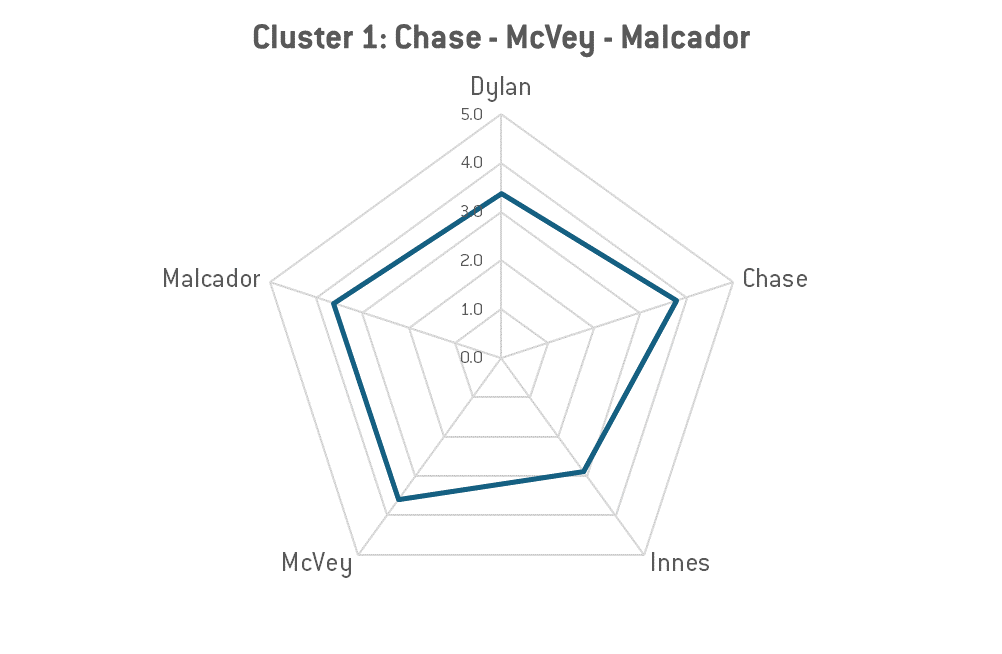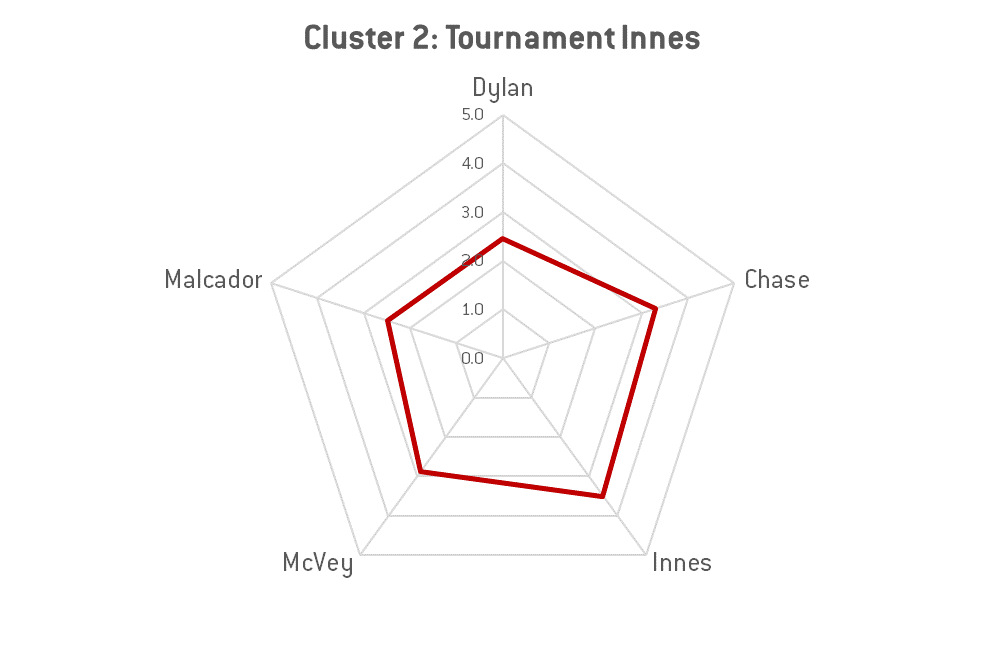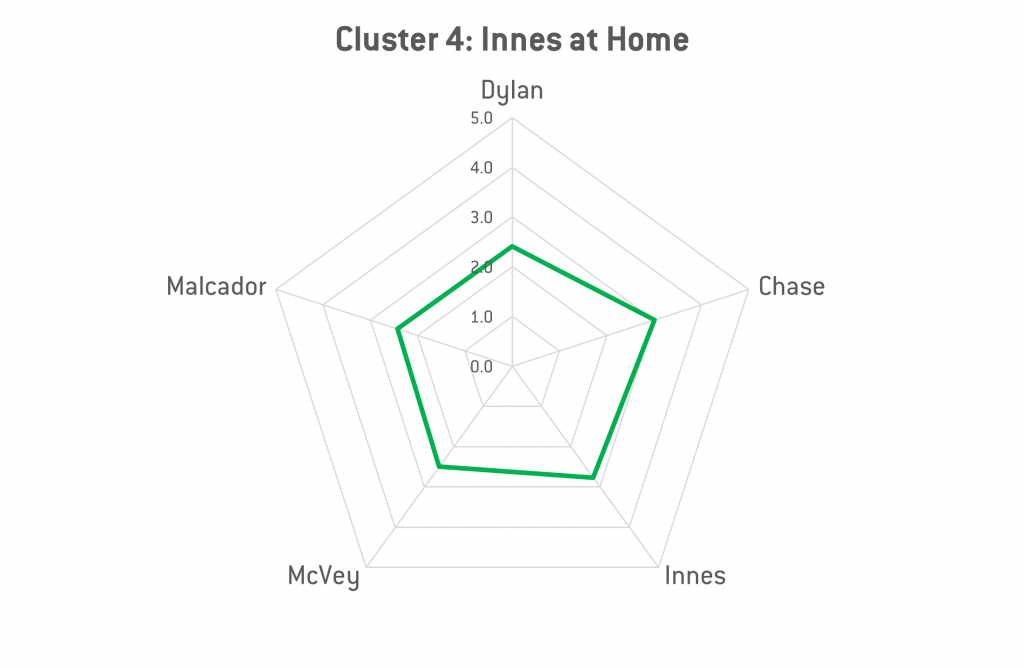Welcome back to our three-part series on player psychographics in Wargaming. In our first installment, we looked at Magic player psychographics, what they are and what they mean. Then yesterday we talked about adapting those to Warhammer and swapped out Mel for a new group – McVey – focused on painting and hobby. If you missed those, you can find them here – Part 1 and Part 2. We then designed a player survey to test some of these ideas and better understand how common these types are in the wild.
You may remember a month or so back when we fielded our Player Motivations survey (which is now closed) – today we’ll be talking about those survey results and what they mean when it comes to placing players within this framework.
The Survey Results
We fielded our survey over a week-long period back in January. And while we polled Goonhammer readers and Patrons, we also passed the survey to a number of other groups and Discords in order to reach a broader swath of players. In total, more than 2,100 players responded to our survey. And after cleaning the data and removing incomplete responses and some bad data, we ended up with 1,860 responses in our data set.
The Games
We asked players responding to the survey to pick a primary game to talk about, and I think it will be no surprise that Warhammer 40k was our top game in this regard – 66% of our respondents picked 40k as their primary game, while another 12% picked Age of Sigmar. We had about 5% each for Horus Heresy, Necromunda, and Kill Team. So when you read this analysis, you can primarily think about this as being about 40k players but not entirely – after all, they only make up two thirds of the respondents.
When it comes to playing their primary game, most of our respondents – more than 56% – only play 0-2 games per month on average. Another quarter averaged 3-4, and only 16% play 5 or more games per month, marking them as players who either regularly attend GTs or just get in a lot of casual games.
As for where those games are played, a little over one third of respondents (37%) play most or all of their games at home or a friend’s house, while 40% play most or all of their games at a local hobby shop or game store. Most players travel less than half an hour to play when they aren’t playing at home. 38% of respondents play most or all of their games against people in their close friend groups, and mostly in the form of one-off or pickup games.
I go through this because it’s important to note that, while a lot of content at Goonhammer focuses on competitive play, our readers are not necessarily all tournament grinders. Many of Goonhammer’s readers are narrative players or hobbyists – and remember that Spike/Innes is a motivation, not a lifestyle. Just because you’re into painting and narrative play doesn’t mean you don’t want to prove something when you play.
Categorizing Answers
Next up were the survey’s motivation questions. We outlined these last time. There were two things I did with these questions. The first was I assigned each question to a psychographic category, noted below. As a reminder, players were asked to rate the importance of each to them on a five-point scale, from “not at all important” to “extremely important.” Note that a question could be grouped into two motivations – there’s room for some overlap here.
Dylan
Dylan is our Timmy/Tammy analog – they play the game to experience something. These questions primarily get at the excitement of creating big moments in game, playing with big models and heroes, interacting socially, and having new experiences in-game.
Dylan questions - click to expand
Chase
Chase is our Johnny/Jenny analog – they play the game to express something. There’s a mix here of army and hobby questions which get at the player expressing themselves through the army they put on the table.
Chase questions - click to expand
Innes/Ines
Innes is our Spike analog – they play to prove something. Most of these are around demonstrating mastery and generating acclaim. Again, some questions can repeat.
Innes questions - click to expand
Malcador
Malcador is our Vorthos analog – they’re all about the story and lore of the games, engaging with the setting and content outside the context of the game. For our purposes, the first question here (being familiar with lore/backstory) was weighted double.
Malcador questions - click to expand
McVey
Our new, wargame-exclusive player group, McVey is the artist/hobbyist, who finds value and immerses themselves in the hobby aspects of the game. As with the Malcador, these might not even be players except in the loosest sense – they may be hobbyists who occasionally put models on the table. For our purposes, the first question here – seeing well painted armies on the table – was weighted double.
McVey questions - click to expand
Using the numerical value of the responses (1-5), we can create scores for each category on a per-respondent basis, and average them. If you’re following along at home, you can give yourself some scores here based on how important each of these is to you. Note that using questions for multiple categories will naturally create overlap and entaglement; that’s OK. We could weight these to adjust for that, but as we’ll see when we do a clustering, they’re intertwined anyways.
Clustering Respondents
Alright, time to get to the survey. I re-adjusted the answer values to be from -2 to +2 and ran the respondent data through a k-means clustering. If you’re unfamiliar with the process, it’s a machine learning process where you treat each respondent like a point in space with a vector whose coordinate values were equal to their response values, i.e. [-1, 0, 2, 2, 0, … , -2, 1], then plotting the distances between each of those vectors. You then group vectors together based on distance, and once you’ve assigned each vector to a group, you’re done. In a k-means clustering, you generate k different clusters and output the center (mean) of each.

You can do this with different cluster counts and compare them to figure out what the best/optimal number of them is – basically you want to break these into groups that are distinct without being so small that they’re not helpful for making larger generalizations and observations about. For this analysis, four ended up being the best number (though you could make a case for seven if you really wanted to, but again, those end up pretty small).
We can look at each of these groups and look at their centers, shared traits, and motivation scores to get an idea of how players actually shake out and what that means for how they approach the game and interact with each other.

Cluster 1: Chase / McVey / Malcador
Size: 536 Respondents
These players are absolutely about expressing themselves – and in the hobby that means both through their list and their models. Yeah, they may not all be great painters, but that doesn’t mean they aren’t invested in doing custom conversions and schemes. Players in this cluster are the most likely to be after hobby awards like best-painted, and are always looking to build armies that stand out with unique models and paint schemes. They’re also the second most likely group to play in events, and in addition to seeking hobby awards they’re also interested in trying and testing new units and lists and winning on their terms. For these players it’s more important to win their way with a unique list than with someone else’s.
Notes:
- There’s a ton of McVey overlap here, but also plenty of Malcador. That goes back to our notion of Chase as a player who wants to express themselves within the constraints of building a lore-specific army, creating unique lore, or creating a unique paint scheme.
- 27% of the respondents in this cluster rated showing off their models on social media as very or extremely important
- 21% of respondents in this cluster rated winning hobby awards as important to them.
- 37% said that it’s important to have a distinctly painted army and to experiment with new units and models.

Cluster 2: Tournament Innes
Size: 237 Respondents
This is the smaller of our two Innes groups, and the smallest cluster overall. This cluster contains many – but by no means all – of the tournament players in our sample. Players in this group are out to prove something. They may primarily see wargaming as a way to challenge themselves and exercise their problem-solving abilities, both on the table and in list-building. For these players, demonstrating a mastery of rules and strategic concepts is very important, and they’re heavily invested in beating skilled opponents. For them, expression isn’t a big factor – they want to play the best armies and play against new opponents and armies and they want to win awards.
Notes:
- Players in this group are the most likely to play games against strangers, and the most likely to have played at large events (57% say at least “some” of their games were played at a large event or convention).
- 42% of players in this cluster say winning awards for play is either “very” or “extremely” important to them.
- Although 48% say it’s important to to them to take the best/most effective army, nearly two thirds of players in this cluster (64%) say playing with their favorite army, units, or models is important to them. There’s some big overlap here as well – 31% say both are important to them, and they likely include players who have several favorite armies but pick the one which currently gives them the best chance to win.
- These players play the most games out of any cluster and it’s not close. Every single player in this group said they played at least 3 games or more per month.

Cluster 3: Dylan / Chase / Malcador
Size: 507 Respondents
Players in this group are in it for the experience, and while every group were likely to say that spending time with friends is important to them in wargaming, players in this cluster primarily see wargaming as a way to interact with friends. To that end, they play almost all of their games at home or a friend’s house, and with people in their personal friend groups. These games are typically friendly pick-up games, though players in this group are also more likely to play in narrative campaigns. Players in this group care the most about knowing the lore and telling a story through the game, with big moments and dramatic events. They’re more likely to be invested in the hobby aspect of their games – though less so than the expression group – and don’t care about awards or social recognition.
Notes:
- There’s a ton of Malcador overlap here, and knowing the lore is important to this group of players, who primarily value telling a story and seeing dramatic moments play out during a game. This was the group for whom knowing the lore was the most important, and who were most interested in telling a story during the game.
- These players play the least of any of the four clusters – 81% said they only play one game of their primary game in a typical month. When they do play, they’re more likely to play to play their games at home or a friend’s house.
- Players in this group have a tendency toward McVey, but it’s not as strong as it is for Cluster 1 – having fully painted armies is important to them, but improving at the hobby, having their own scheme, and learning new techniques isn’t as important for them as it is for the Chase / McVey group.

Cluster 4: Innes at Home
Size: 530 Respondents
Remember back in part 1 where we said that Spikes could be bad at the game? This is the “Innes” type who don’t play in tournaments, and make up what I think most people would think of as the “casual competitive set.” These players are heavy on the Innes and Chase aspects, but light on nearly everything else. They’ve got something to prove and see wargaming as a way to exercise their problem-solving abilities but they’re less interested in competitive play, awards, and beating top opponents, and care the least about showcasing models or expressing themselves in the list-building stage. I’d liken these players to being the most likely to view a wargame like a boardgame – one where they play to win and demonstrate strategic and rules mastery – but not a hobby or lifestyle. They’re more likely to be older, more affluent, and have children than the other groups, and play primarily against their personal friend groups. If they play competitively, it’ll likely be at a local RTT.
Notes:
- This group still ranks social interaction as an important motivator for play, though it’s lower here than for the other two groups. They rate demonstrating mastery of strategy and rules higher than Clusters 1 and 3.
- Compared to Cluster 3, these players play a lot more games, but not as many as Cluster 2 – 39% say they play a 3-4 games or more in a typical month, though 37% say they play most or all of their games at home or a friend’s house.
- Tournament play isn’t a big focus for these players – more than half (52%) said they hadn’t participated in an RTT in the past year and 72% hadn’t participated in a GT.
What it All Means
So we’ve ported over Magic’s player graphics, given them a new coat of paint, surveyed players, and built a framework for understanding who’s out there. What now?
Well, the first thing is to note that not a single one of these groups fell neatly into a single category. While these players tended to share a lot of things in common across our four clusters, there were still plenty of things which could vary, and a lot of overlap – our Chase group showed a lot of McVey traits, and our Dylans had a lot of Chase, while there was lots of Innes and Chase overlap as well.
If there’s one thing I want to point out about this, it’s the distinction here between the two Innes groups. One of the most important aspects of the Timmy/Johnny/Spike profile is that it doesn’t define Spike as a player type but a player motivation – the idea that a Spike isn’t necessarily good at the game or playing in events is incredibly important. Likewise here, when we clustered our respondents we found two very clear, distinct Innes-leaning groups – one playing at events and one not playing at events.
This is a really good distinction because it gets to what I believe is at the heart of the competitive-casual debate: Namely, that a lot of these conversations and debates are borne out of players in clusters 3 and 4 interacting with each other – and that’s in large part because players in clusters 1 and 2 just don’t interact nearly as often with players in the latter two clusters. Clusters 1/2 are playing at events and Clusters 3/4 are playing at home with friends. But when a cluster 3 and a cluster 4 player meet, the player in cluster 3 sees the game as the backdrop for social hangouts, while player 4 sees the game as the point, and is playing to win. This mismatch of expectations is more likely to result in a bad time.
There’s I think going to be a kneejerk reaction to label Cluster 4 as bad or the villains of the piece but I think that’s a mistake as well – they’re players invested in the game moreso than the hobby or lore and have a genuine interest in proving themselves through good play and there’s something to be said for that, even when it doesn’t come attached to being passionate about the hobby.
It’s also worth noting that this competitive-casual group are double the size of the tournament group in our survey results, and together they make up less than half our survey respondents. Just because you aren’t always invested in taking the strongest army or winning awards doesn’t mean you can’t be interested in tactics, and being a top player doesn’t mean you can’t desire to get better at painting or interested in the lore. We all have multiple, different reasons for playing and different things we’re interested in.
So if you just want to hang out and roll dice, that’s cool. Let’s make the conversation more about what motivates you to play and less about how good your list or unit selections are and figure out how you can meet in the middle with someone whose motivation is stomping an opponent. Play a valiant last stand against an overwhelming force. Set some handicaps. Find ways to add variance to your game to create the big, storied moments you’re looking for or the killer photos of the action. When you’ve squared up on why you’re at the table, it’s easy to create scenarios where both players win.
Metaphorically speaking, anyways. One of you is still probably going to lose the actual game. Just be cool when it happens.
If you have any questions or comments feel free to drop us a note in the Comments below or email us at contact@goonhammer.com. And if you want regular updates in your inbox, subscribe to our newsletter.


